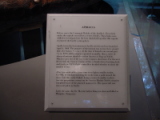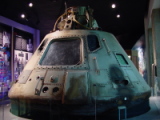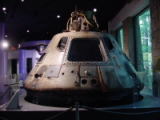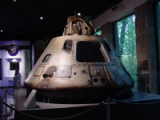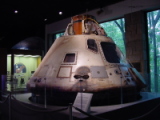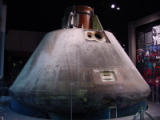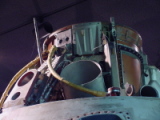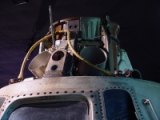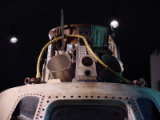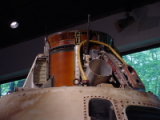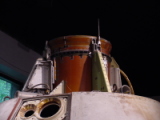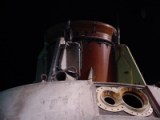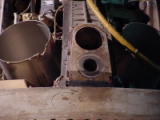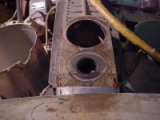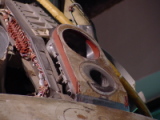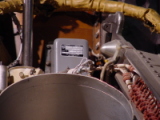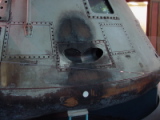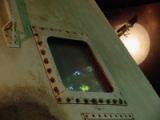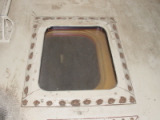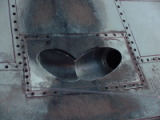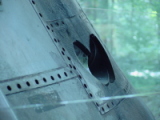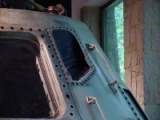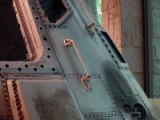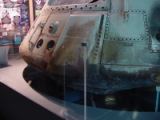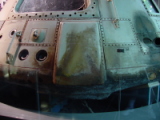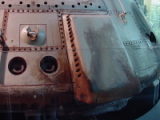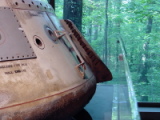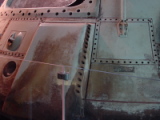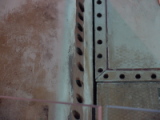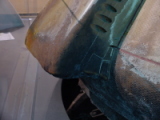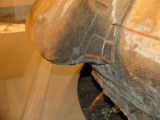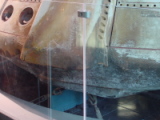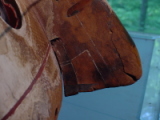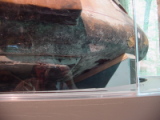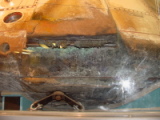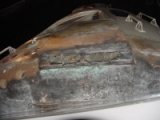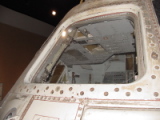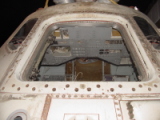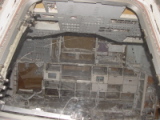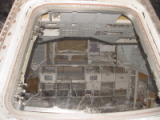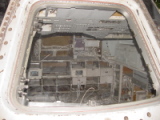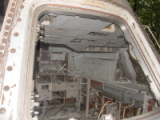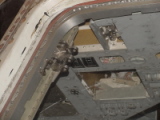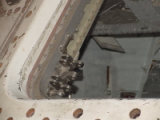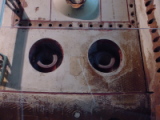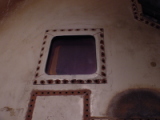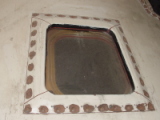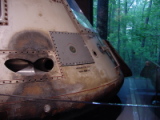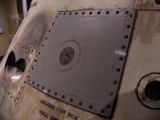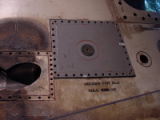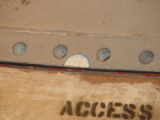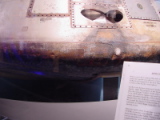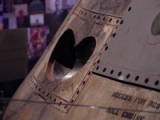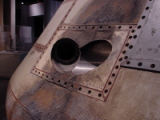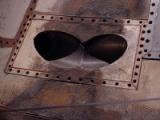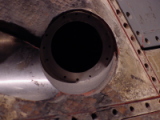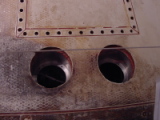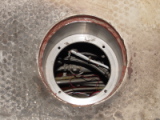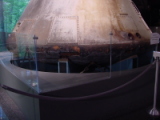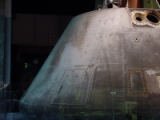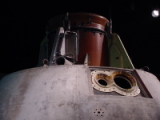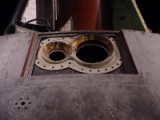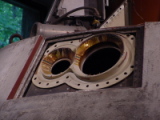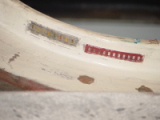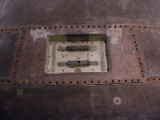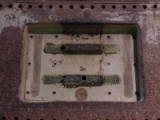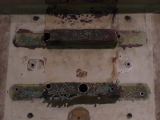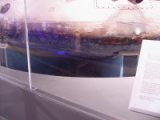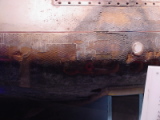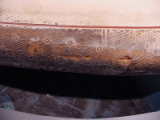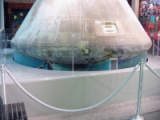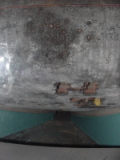Return to Fernbank Science Center
Apollo 6
Apollo 6, you might say, was a flight of "lasts." It was the last unmanned Apollo mission. It was the last flight of a Block I command module. It was the last test flight of the Saturn V. You can read about what was planned for Apollo 6 in the Apollo 6 Press Kit at the Kennedy Space Center Library's press kit page (or this direct link to 4.9 meg PDF file).
However, Apollo 6's Saturn V did not cooperate nearly as well as did Apollo 4's. The vehicle experienced fairly severe pogo. Parts of the spacecraft/lunar module adapter broke off and fell away. Two engines on the second stage failed, and when the engine on the third stage was supposed to restart it wouldn't. So, this was also the last flight where the Saturn V suffered such significant failures. And yet, even with all of these problems, the folks at Marshall went to work, implemented corrective actions, and the next Saturn V (Apollo 8) was manned and sent men to orbit the moon.
In a way, I like it when hardware misbehaves, because there are extra reports to be generated, describing what actually happened and comparing it to what was supposed to happen; it's a great way to learn! In addition to the standard-issue Apollo 6 Mission Report, AS-502 Flight Evaluation, and S-IVB-502 Flight Evaluation, there's also the AS-502 Flight Report Volume 2 - S-II Failure and the AS-502 Flight Report Volume 3 - S-IVB Failure.
Even if Apollo 6's Saturn V didn't behave, the footage from its launch is among the most famous Apollo launch footage. The next time you see Saturn V launch footage showing the entire vehicle climbing past the top of the LUT and the service module is white, that's footage from the Apollo 6 launch. Apollo 4 and all of the manned Saturn V launches had your standard-issue silver-grey service modules.
Although Apollo 6 is a Block I command module (serial number CM-020), it did have a number of Block II modifications: It had five EVA handrails, to "provide a more representative Block II configuration;" it sported a Block II "unified" crew hatch (although Fernbank displays Apollo 6 without its hatch); and it featured a "simulated Block II umbilical."
The two most obvious external differences between the Block I and Block II command modules are the Earth landing system (ELS) and the CM/SM umbilical. Good comparisons of the Block I and II ELS can be found in the Apollo Experience Reports for the Earth Landing System and Command Module Uprighting System.
Much of the hardware has been removed from the spacecraft. It has very few of its thrusters (although the thrusters' removal does allow one to peer inside the heat shield, to see the plumbing on the outside of the pressure vessel). Many of the instruments from the interior are gone, as are the sextant and scanning telescope.
Prior to being located at the Fernbank Science Center, Apollo 6 formerly resided at the Alabama Space & Rocket Center (known today as the U.S. Space & Rocket Center).
Apollo 6 looks kind of out of place at the Fernbank Science Center. It sits next to large window overlooking a wooded area, and is located not far away from a display case with some stuffed birds. Other than the planetarium, the museum itself consists largely of wildlife dioramas and a few dinosaurs. The only thing preventing Apollo 6 from looking completely out of place is the Aerospace Education Laboratory, a space-themed computer lab which was located in the museum at the time.
When we visited in 2004, there were several display cases next to Apollo 6 with Apollo-related exhibits, but they had been removed by the summer of 2005.
Apollo 6 is Smithsonian catalog #A19740646000.
Apollo 6 is displayed without its hatch; the hatch is catalog #A19770327000 and appears (based on the Smithsonian photos) to be on display in a museum somewhere in Asia.
